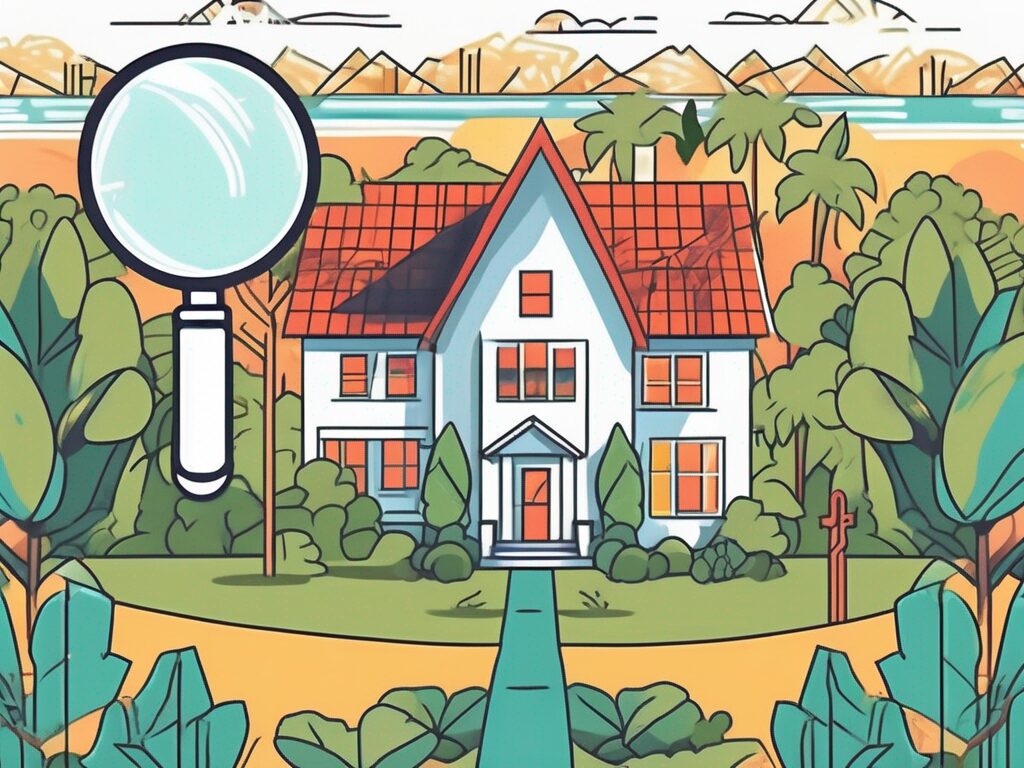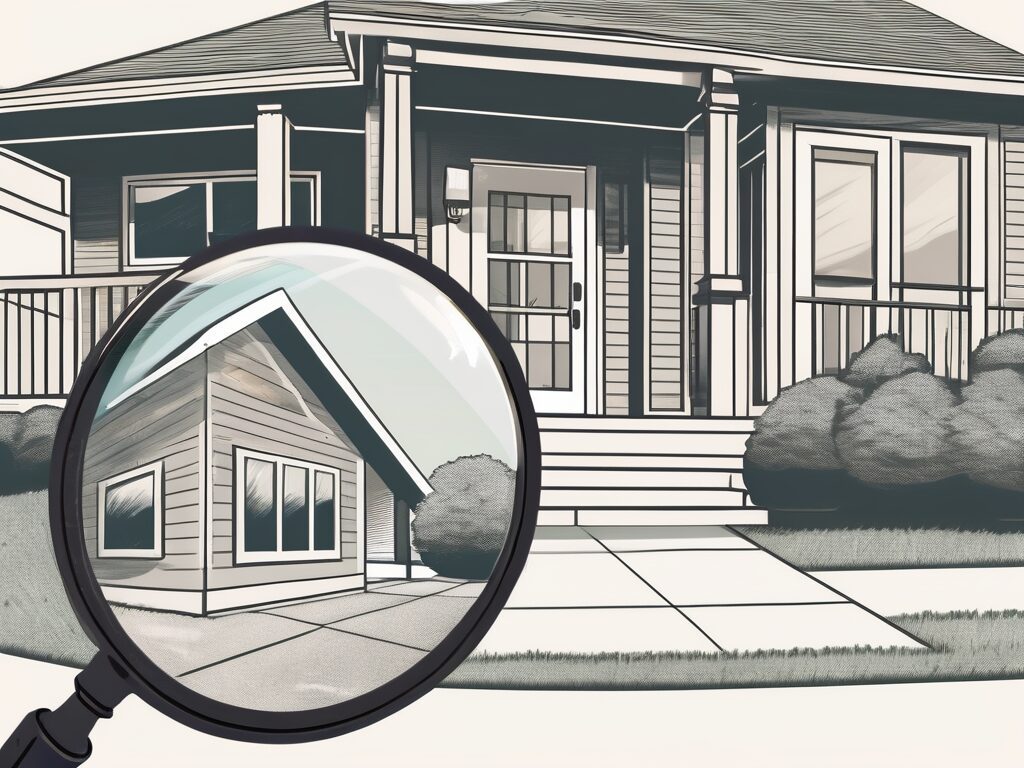
Agent A-Team or Solo Superhero? Finding the Right Real Estate Partner for Your Selling Journey in Wildwood Florida
When it comes to selling your home in Wildwood, Florida,…
January 29, 2024
Congratulations! You’ve successfully completed a home inspection on your property. Now that the inspection has taken place, it’s important to understand what steps to take next. This guide aims to provide you, as a seller, with a comprehensive overview of the post-inspection process and how to navigate it effectively. By familiarizing yourself with the various aspects covered in this article, you’ll be better equipped to address any issues that arise and ensure a smooth transaction with the buyer.
Before delving into the specific actions to take after a home inspection, it’s crucial to comprehend the scope of a typical inspection. A comprehensive home inspection is conducted by a professional who evaluates the property’s condition, identifying potential problems or areas that may require repair or improvement. This assessment covers various aspects of the property, such as its structure, systems, and overall safety. By understanding what a home inspection entails, you can better prepare for the subsequent steps.
During a home inspection, the inspector meticulously examines the property, leaving no stone unturned. They carefully scrutinize every nook and cranny, searching for any signs of wear and tear or potential hazards. From the foundation to the roof, from the plumbing to the electrical systems, nothing escapes the inspector’s keen eye.
When it comes to the foundation, the inspector will assess its stability and look for any cracks or signs of structural damage. They will also inspect the roof, checking for missing shingles, leaks, or any other issues that may compromise its integrity. Plumbing is another crucial area that the inspector focuses on, ensuring that there are no leaks, blockages, or faulty fixtures.
The electrical systems in the house are also thoroughly examined. The inspector will check the wiring, outlets, and circuit breakers to ensure they are up to code and functioning properly. They will also inspect the HVAC (Heating, Ventilation, and Air Conditioning) systems, making sure they are in good working condition and providing adequate comfort to the occupants.
Appliances, such as refrigerators, stoves, dishwashers, and washing machines, are not overlooked either. The inspector will test these appliances to ensure they are in proper working order. They will also inspect other areas of the property, such as the garage, attic, and crawl spaces, to assess their condition and identify any potential issues.
A thorough home inspection typically covers several key areas to assess the property’s condition. These areas include the foundation, roof, plumbing, electrical systems, HVAC, appliances, and more. During the inspection, the inspector will inspect these elements for any issues, defects, or safety concerns. It’s important to keep in mind that the scope of the inspection may vary depending on local regulations and industry standards.
When it comes to the foundation, the inspector will carefully examine its construction, looking for any cracks, settling, or other signs of damage. They will also assess the drainage around the foundation to ensure proper water flow and prevent moisture-related issues.
The roof inspection involves checking the condition of the shingles, flashing, gutters, and chimneys. The inspector will look for any signs of leaks, damage, or inadequate ventilation that may lead to future problems.
Plumbing is a critical component of any home, and the inspector will thoroughly evaluate its condition. They will check for leaks, corrosion, water pressure, and proper drainage. They will also inspect fixtures, such as sinks, toilets, and showers, to ensure they are functioning correctly.
The electrical systems in the house will be carefully examined to ensure they meet safety standards. The inspector will check the electrical panel, wiring, outlets, and switches for any signs of wear, improper installation, or potential hazards.
HVAC systems play a vital role in maintaining a comfortable living environment. The inspector will assess the heating and cooling systems, checking for proper operation, efficiency, and safety. They will also inspect the ductwork and ventilation to ensure adequate airflow throughout the house.
Appliances, such as water heaters, stoves, ovens, and dishwashers, will be tested to ensure they are in good working condition. The inspector will check for any leaks, malfunctions, or safety issues that may arise from these appliances.
Prior to the inspection, it’s essential to prepare the property to ensure a smooth process. Clearing access to various areas, such as the attic or crawl spaces, will enable the inspector to thoroughly assess the property. Additionally, ensuring that all utilities are turned on and accessible is crucial, as it allows the inspector to evaluate the functionality of systems such as HVAC, plumbing, and electrical.
Preparing for a home inspection goes beyond just clearing access and ensuring utilities are on. It also involves addressing any known issues beforehand or disclosing them to the buyer. By doing so, you can manage expectations and avoid surprises during the inspection. This level of transparency and proactive approach as a seller can help build trust and facilitate a smoother transaction.
Furthermore, taking the time to tidy up the property and make it presentable can leave a positive impression on the inspector. A clean and well-maintained property reflects the care and attention you have given to your home, which can contribute to a more favorable inspection report.
Remember, a home inspection is not a pass or fail test. It is an opportunity to identify any potential issues and make informed decisions. By understanding the scope of a home inspection and adequately preparing for it, you can navigate this process with confidence and ensure a successful outcome.
Once the inspection is complete, you’ll enter into the post-inspection phase. During this period, there are specific actions to take and considerations to keep in mind in order to maintain a productive dialogue with the buyer and reach a mutually beneficial agreement.
After the inspection, it’s natural for both the buyer and the seller to feel a mix of emotions. The buyer may have concerns about the property’s condition, while the seller may worry about the impact of the inspection findings on the sale. It’s important to approach this phase with a level head and a willingness to work together to find common ground.
After the inspection, the buyer will receive a detailed inspection report outlining the findings and recommendations. As a seller, it’s important to review this report carefully to fully grasp the issues raised by the inspector. Take the time to understand the severity of the concerns and their potential impact on the sale.
Consider seeking professional advice from your real estate agent or a home inspector to gain further insight into the inspection report and its implications. Being well-informed will enable you to respond effectively to the buyer’s requests and negotiate the next steps.
Remember, the inspection report is not a definitive list of everything that may be wrong with the property. It is a snapshot of the condition of the property at the time of the inspection. Some issues may be minor and easily addressed, while others may require more significant repairs.
Upon reviewing the inspection report, the buyer may submit repair requests for you to address before the closing. It’s crucial to approach these requests with a constructive mindset and an aim to reach a fair agreement that satisfies both parties.
Start by prioritizing the repair requests based on their significance and potential impact on the property’s value or safety. Engage in open communication with the buyer, seeking clarification on their concerns and discussing possible solutions. This collaborative approach can help foster a positive atmosphere and facilitate a successful negotiation process.
Keep in mind that negotiation is a give-and-take process. While you may not be able to address every repair request, be willing to make reasonable concessions to demonstrate your commitment to resolving any legitimate concerns.
Once you and the buyer have reached a mutually satisfactory agreement regarding the repairs, it’s important to outline the agreed-upon terms in writing. This documentation provides clarity and ensures that all parties are on the same page.
During this phase, it’s also essential to maintain regular communication with the buyer and promptly address any questions or concerns that may arise. This open line of communication helps build trust and keeps the transaction progressing smoothly.
Remember, reaching an agreement on repairs is just one step in the overall home selling process. It’s important to stay focused and continue working towards a successful closing.
Following the repair agreement, the next steps in the home selling process include the appraisal and closing. These stages are typically coordinated by your agent and involve evaluating the property’s value and finalizing the sale.
During the appraisal, a professional appraiser will assess the property’s worth based on various factors, including recent sales of comparable properties. This valuation is crucial for determining the final sale price and securing financing for the buyer.
Once the appraisal is complete and the closing date approaches, it’s important to cooperate with the buyer and their representatives to ensure a smooth transition. Providing any necessary documentation promptly and fulfilling your obligations as outlined in the purchase agreement will help expedite the closing process.
Remember, the post-inspection phase is a critical time in the home selling process. By approaching it with patience, open communication, and a willingness to find common ground, you can navigate this phase successfully and move closer to a successful closing.
In some cases, the home inspection may uncover significant issues that require attention. It’s important to approach these problems promptly and proactively to maintain the integrity of the transaction and preserve the buyer’s trust.
During a home inspection, several common issues may be identified. These can include structural damage, roof leaks, plumbing or electrical concerns, pest infestations, trip hazards, fire hazards, non-working appliances, and more. Understanding these potential problems allows you to be prepared for their potential discovery and take appropriate action.
Structural damage can be a serious concern as it affects the overall stability and safety of the property. It may include issues such as foundation cracks, sagging floors, or bowed walls. When such problems are detected, it is crucial to consult with professionals—such as contractors or engineers—to determine the best course of action. They can assess the severity of the damage and provide recommendations for repairs or reinforcements. Obtaining multiple quotes from reputable service providers will help you make informed decisions and find cost-effective solutions.
Roof leaks can lead to water damage, mold growth, and compromised insulation. If the inspection reveals any signs of roof leaks, it is important to address them promptly to prevent further deterioration. Engaging the services of a qualified roofer can help identify the source of the leak and recommend the necessary repairs or replacement. Keep in mind that addressing roof damage may require permits or additional approvals. Engage with local authorities to ensure compliance with relevant regulations and maintain transparency throughout the process.
Pest infestations, such as termites or rodents, can cause extensive damage to a property if left untreated. If the inspection uncovers any signs of infestation, it is essential to address them promptly. Engaging professionals, such as pest control experts, can help identify the extent of the infestation and implement effective eradication measures. Additionally, they can provide recommendations for preventive measures to avoid future infestations.
If structural or roof damage is identified during the inspection, it’s crucial to consult with professionals—such as contractors or engineers—to determine the best course of action. Obtaining multiple quotes from reputable service providers will help you make informed decisions and find cost-effective solutions.
Keep in mind that addressing structural or roof damage may require permits or additional approvals. Engage with local authorities to ensure compliance with relevant regulations and maintain transparency throughout the process.
In the event that issues related to chimneys, wildlife, or pest infestations are discovered during the inspection, it’s essential to address them promptly. Engaging professionals, such as chimney sweeps or exterminators, can help resolve these concerns effectively and ensure the property is safe and habitable.
If trip hazards, such as uneven walkways or loose steps, are found during the inspection, it’s important to prioritize their repair to minimize the risk of accidents or injuries. Consulting with a contractor or landscaper can help identify potential solutions and implement the necessary repairs.
Issues related to plumbing, HVAC systems, or electrical components often require the expertise of licensed professionals. Addressing these concerns promptly and seeking the assistance of qualified technicians can help ensure the property’s functionality and safety.
Inspectors may identify fire hazards or non-working appliances during the assessment. In such cases, consulting with professionals, such as electricians or appliance repair technicians, is crucial to rectify the issues and ensure compliance with safety standards.
In some instances, sellers may find themselves financially constrained and unable to address all the issues identified in the inspection report. If this situation arises, it may be worth considering selling the property “as is.”
When selling “as is,” it’s important to disclose all known issues to potential buyers upfront. This transparency allows buyers to make informed decisions and adjust their offers accordingly. Working closely with your real estate agent, you can navigate this option and explore alternatives that make the most sense for your circumstances.
By following the guidance provided in this comprehensive guide, you’ll be better prepared to handle the post-inspection process effectively as a seller. Remember, open communication, cooperation, and a proactive approach are key to reaching a successful outcome and ensuring a positive experience for both you and the buyer.

If you want the Richr team to help you save thousands on your home just book a call.
 Book a call
Book a call